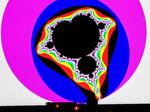Other

“FPGA-based real-time fractal generation. Fully pipelined, dynamic resource allocation, up to 18000 MMUL/s. Float matrix math on J1B CPU. Fractal generation is a popular FPGA design exercise. For example, Stanford university used it as lab assignment already in …

